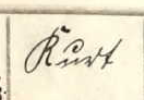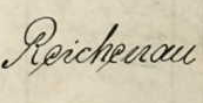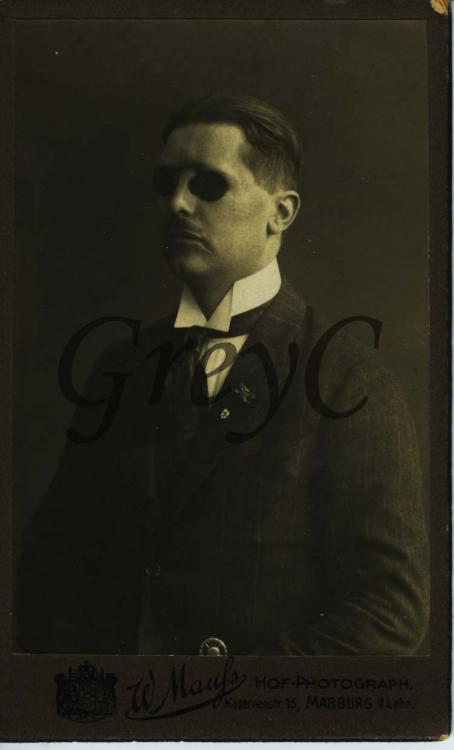-
Posts
888 -
Joined
-
Last visited
-
Days Won
6
Content Type
Profiles
Forums
Blogs
Gallery
Events
Store
Posts posted by GreyC
-
-
Hi!
In German they were called "nicht etatisiert", meaning not listed as unit in its own right within the military budget plan.
GreyC
Hi again,
the RIR 213 was part of the RIBr 89 in Oct. of 1918 and maybe earlier . The RIR 213 was based in Schleswig Holstein, in the north of Germany. They have a printed regimental history.
GreyC
0 -
All Kriegsstammrollen of the Prussian troops and the Kontingent-Truppen should have been destroyed shortly before the end of the WW2 in an air raid on Potsdam on 14th April 1945. Some material was removed before the raid, but, to my knowledge, not the Kriegsstammrollen.
For Saxon units you should have a look a the state archiv in Leipzig. Some stuff is still there, but lots was lost, in the famous air raid in February 1945. But there ought to be some Stammrollen in the Staatsarchiv Leipzig.
The Bavarian Kriegsstammrollen are still all there and can be accessed thru Ancestry.
The Württemberger Kriegsstammrollen are still accessible.
GreyC
0 -
Hi,
I wouldn´t be to sure about the notion the photos were taken before the loss of the Pinguin. There is a photo showing a fresh wreath. It may well have been for the comrades kia. Don´t forget that there must have been members of the Pinguin still in German service after the sinking of the Pinguin because they were part of the prize crews that navigated some of the captured ships home and so escaped the demise of their ship.
GreyC
0 -
It says:
Am Kemmel durch Kopierstift Augen entzündet (kein Selbstverschulden)
5.5.18 ins Feldlazarett 122 Dt. Feldpost 358
Near or on the Kemmel [village as well as hill in Westflandres) eye infection through indelible pencil (not his fault= not intentionally)
GreyC
As strange as it seems, injuries thru the use of Kopierstifte (indelible pencils) were at that time quite common. Because of the mix of ingredients of the ink, which was poisenous if in contact with wounds, many clerks had infections after they accidentally pierced themselves with this type of pencil. Another common phenomenon was the blue lip or tongue, as the people tended to lick on the mine of the pencil. As it was indelible, you could identify clerks by their blue lips as such.
GreyC
0 -
-
-
Hi Mattyboy,
it´s always good to have more text to work with in cases where one wants to decipher words or similar letters.
It does look like a "R" but could maybe be a "K" more text would help to compare. Same is true with the first letter. Could be a "S" or an "I".
The two words beneath means "mit Schw[ertern]" - with swords - if this is of any help trying to identify the medal.
GreyC
0 -
I´d second Befund.
GreyC
0 -
Hi,
interesting photos. The last photos shows navy personnel in front of Schloss Sanssouci in Potsdam. The photos with the officers seem to have been taken inside the Reichskanzlei (Marmoorsaal?). Among some navy officers there is a Kontre-Admiral and a SS Oberführer (in the army it would rank between Oberst and Generalmajor, no army equivalent, though) present.
He might wear a Baltenkreuz which means he served with a Freikorps in the Baltic in 1918/19. I suspect the lower rank officers might have been presented with an EK I on this occasion.
GreyC
0 -
Good evening gentlemen.
Interesting shoulder boards. I feel reminded of Mr. Curchills "I have nothing to offer but blood, toil, tears and sweat." (and yes, I know he said this within the context of the next world war on 13th May 1940, but the wearer of these boards seems to have given just that, as so many others already in WW1).
0 -
Nice one, sir!
GreyC
0 -
Hi Gordon et al.,
if you are still interested in the topic at large, there is a Bundeswehr journal called if (for Innere Führung). In its Nr. 4/2016 issue there is a multipage article on how to meet the needs and demands of a multi-religious army, now that growing numbers of German muslims have joined as professional soldiers. Their numbers are estimated at about 1400-1600.
One way was to institutionalize the ZASaG, Zentrale Ansprechstelle für Soldatinnen und Soldaten anderer Glaubensrichtungen (Central Topic Center for Soldiers of Other Religious Faith/Denominations). It is the first center within the Bundeswehr for soldiers of jewish or muslim faith. Up to that point they had to rely on clergy from outside the Bundeswehr.
The article also gives a concise overview of the structure of pastoral military care in the Bundeswehr today.
Unfortunately the internet presence of the journal was discontinued in 2013, so only the print version is still available. I got mine for free. If there is serious interest I´d be prepared to scan and mail the 8 page article.
GreyC
0 -
Hi,
if familiar with the German language for starters:
http://www.erstes-garderegiment.de/Geschichte/Geschichte8.htm
and:
Ernst von Eisenhart-Rothe, Martin Lezius (Hrsg.): Das Ehrenbuch der Garde. Band I. und II: Die preußische Garde im Weltkriege 1914–1919. bearbeitet und mit Unterstützung der kameradschaftlichen Vereinigungen des ehemaligen Gardekorps und zahlreicher Angehöriger seiner Formationen, Berlin/Stuttgart ohne Jahresangabe, Tradition Wilhelm Kolk/Vaterländischer Verlag Oskar Hinderer.
GreyC
0 -
Very interesting collection of these symbols of regulatory executive force/power.
GreyC
0 -
Very nice, Ross. First time I have seen any.
GreyC
0 -
Hi,
browsing thru the forum I came across this #2 post which was posted way back, so I don´t know if this is still of interest. But the signature on the mount of the photo does not designate the person in the photo but the photographer. His name was Vahldiek. There was a photographer in the 1870s by that name in Brunswig, so this photographer could be from that family (though the town´s name does not really look like Braunschweig. Not to be confused with another family of photographers in Schleswig Holstein and Rostock by the name of Vahlendieck.
GreyC
0 -
Hi,
I don´t know if it is genuin or not, but I had the chance to have the writing translated by a chinese friend.
It says: Medal (or decoration) for the fight against japanese imperialism by the commander of the 3rd warzone Gu Zhutong [name of the commander].
GreyC
für den Kampf gegen den japanischen Imperialismus. Die untere Schriften bedeutet: von dem Befehlshaber der dritten Kriegszonen Gu, Zhutong (das ist die Name von dem Befehlshaber).
0 -
On 11.12.2009 at 01:48, Naxos said:
Chris, all I can make out is: Mutter verst. 25.10.18 (most likely in this case abbreviation for verständigt but it is also the abbr. for verstorben). The rest are more abbreviations, sorry.
Hi Chris,
it means verstorben (passed away) and refers to the column where details of parents are noted.
GreyC
6 hours ago, Mattyboy said:Hi Chip,
I thought it was something like Sch...dal, so our thoughts are not too far off.
Hi Andy,
Unfortunately there is very little info available about this unit, so this elusive name will be a great help to me!
I, too, read ....dal. The rest is more difficult.
GreyC
0 -
Thank you for the link, Michael!
But is it a EK I or EKII, I wonder?
GreyC
0 -
Hello gentlemen,
I got this photo because it shows a war-blinded veteran. He wears his VWA (wound-badge) and a bar with what seems to be an EK. I haven´t seen one with a miniatur-cross on it on a bar like this (without the vertical stripes) before. Can you tell me, wether this kind of bar was offical and in use often? It seems to be an Iron Cross 1st class?
1915 the then director of the ophtalmological Institut of the University of Marburg, Prof. Dr. Alfred Bielschowsky started courses, in which those soldiers who returned with the loss of sight could start vocational training and rehab measures. From this, in cooperation with other institutions the Blindenstudienanstalt Marburg, the study center for blind people, emerged which still exists today as a high-school.
Judging by the design of the Carte de Visite photo, the gentleman pictured will probably have belonged to the first veterans who made use of these courses.
Thank you very much.
GreyC
0 -
Hi,
the German writing on the middle photo means "Grandpa" in English, the writing on the sailor photo says "Two friends 17th March 1???".
GreyC
0 -
Hi,
interesting picture!
GreyC
0 -
Hi Yorkstone,
Reiter SA - Yes. Stuttgart - No. It is the place the afore mentioned book was published in in 1935. The Standarte was situated in Koblenz:
http://forum.axishistory.com/viewtopic.php?t=166669
GreyC
0 -
Pleasure, Sir. There are photos of it in wear here in this forum in the section on the iron croses.
In ID 8 you can even see a rabbi wearing the brassard.
GreyC
0 -
Hi,
an interesting thread. Thanks for your article. The first brassard (?) in id 1, white/purple and red cross is in use in the German military since 1908, starting with Prussia and adopted for all states to be worn by all clerics of all christian denominations. The catholic clerics wore an additional purple stole during WW1.
GreyC
0










Sturmkompanie
in Germany: Imperial: Rick (Research) Lundstrom Forum for Documentation and Photographs
Posted
Dante,
please note that RIR 213 was not, as you write, part of the 89. Infanterie Brigade, but of the 89. RESERVE Infanterie Brigade (just stress this, because it´s easily confused. The 89th IB was Saxon).
GreyC